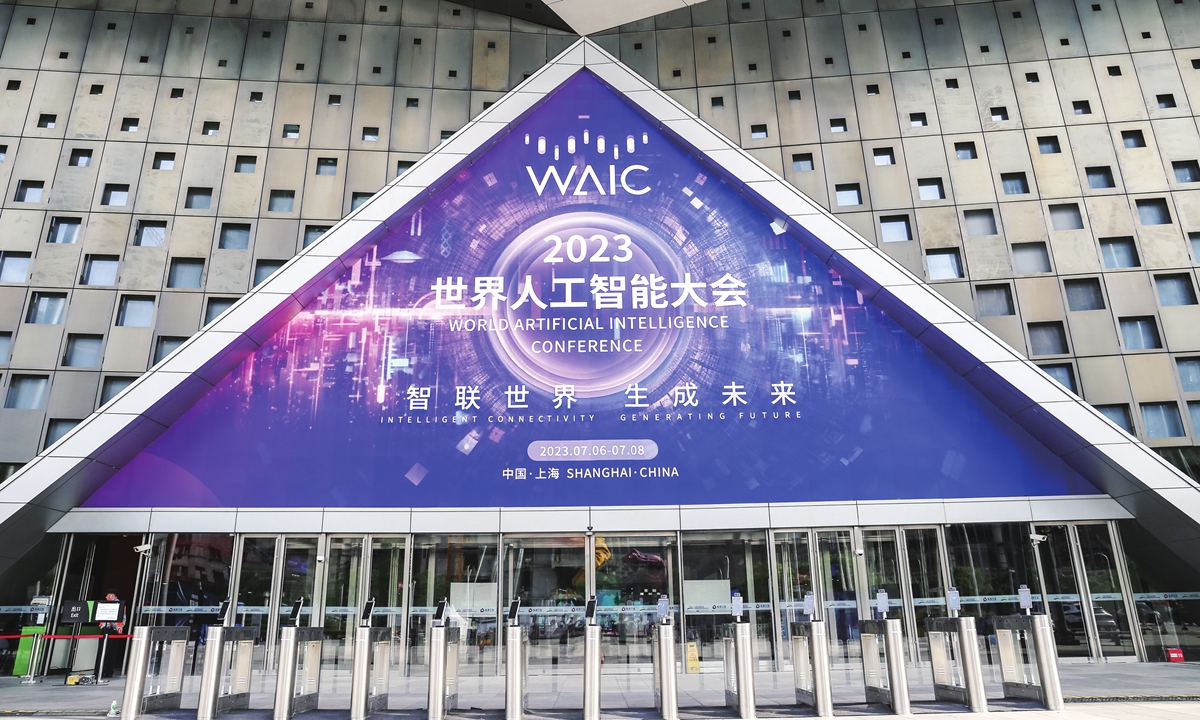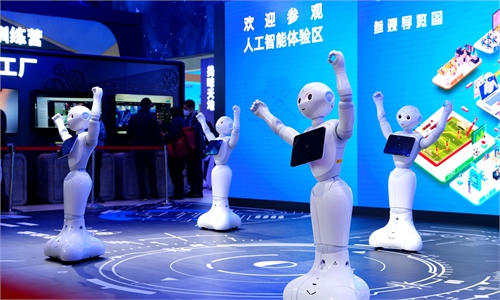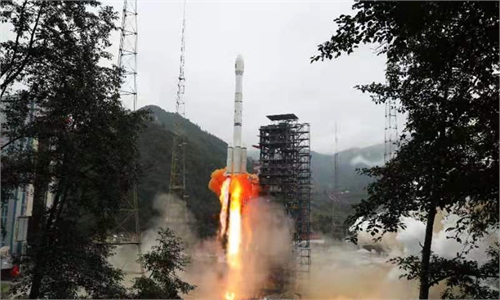30 large-language models on display at 2023 WAIC
Leading Chinese tech companies are ramping up generative AI innovation

A view of the 2023 World Artificial Intelligence Conference in Shanghai Photo: VCG
Large-language models and generative AI products are the highlights of the World Artificial Intelligence Conference (WAIC) recently held in Shanghai. For the first time, the conference featured a dedicated exhibition area showcasing a total of around 30 large-language models developed by Chinese and overseas companies.
"The conference aims to showcase forward-thinking and high-profile large-language models that represent China's unique characteristics and Shanghai's leadership in the current wave of AI innovation," said Wu Jincheng, Director of the Shanghai Municipal Commission of Economy and Informatization.
Over the past two months alone, several Chinese tech companies have announced significant progress in the development of large-language models.
On June 28, ByteDance's Volcano Engine has announced the launch of Volcano Ark, an AI model service platform.
On June 9, Chinese tech giant iFlytek released version 1.5 new AI-driven cognition model "Spark". Jiang Tao, senior vice president of iFlytek, said the company aims to exceed ChatGPT's capabilities in Chinese language, reaching the same level as the English chatbot possibly in the fourth quarter this year, domestic news site nbd.com reported.
Chinese organizations have launched 79 large-language models over the past three years, according to a report released by Institute of Scientific and Technical Information of China (ISTIC) in May.
Accelerating innovation
The leading large-language models in China have shown impressive performance, comparable to GPT3.5, industry insiders said. Among them, Baidu's ERNIE bot has surpassed GPT3.5 and ranks first among domestic large models, according to a test made by China Academy of Industrial Internet (CAII).
In particular, the integration of large- language models with various segments of China's industries has gained significant momentum lately.
Baidu's ERNIE bot for instance, has collaborated with the Southern Power Grid Dispatch and Control Center to explore the use of AI big models, effective in managing power dispatching scenarios.
In the automotive industry, Changan Automobile is leveraging Baidu's ERNIE bot to develop generative AI products, in order to enhance user experience for mass-produced vehicles.
360 Security Group is also adapting its large language model into various scenarios. In smart city application, a large language model developed by 360 surpassed ChatGPT in the national certified tax agents examination, the company told the Global Times on Wednesday.
"Large language models will become standard in every digital system, deployable in smartphones and cars, and ubiquitous,"Zhou Hongyi, the founder of 360 Security Group said at Global Digital Economy Conference in Beijing on July 2.
Industry-specific large-language models, which incorporate specialized data and knowledge to accurately match real-world application scenarios, have emerged as a powerful force driving efficiency upgrade, Wang Peng, a research fellow at the Beijing Academy of Social Sciences told the Global Times.
He noted that China's large-language models have been applied in key sectors including finance, media, culture and tourism. The financial industry, largely information-intensive, is considered one of the best application scenarios for large-language models.
China and the US are leading the global distribution of large models, accounting for more than 80 percent of the total, according to Zhao Zhiyun, dean of ISTIC, who spoke at the ZGC Forum in May.
While the US has consistently held the position of global leader in terms of the number of large models, China has entered a phase of rapid development since 2020 and is currently experiencing synchronized growth with the US, Zhao noted.
Rapid AI development
According to a research report by iResearch, the market size of China's AI industry has increased from 154.6 billion yuan ($21.34 billion) in 2020 to 195.8 billion yuan in 2022. It is estimated to reach 612.2 billion yuan by 2027, with a compound annual growth rate of 25.6 percent from 2022 to 2027.
Wang, discussing China's development of large-language models, highlighted significant advantages for China's large-language models.
"We possess an enormous amount of data, with numerous applications across various industries. When it comes to training models with Chinese language data, we have a clear advantage over some foreign models," Wang said.
However, he also acknowledged that there are still some gaps between domestic and foreign models in terms of precision and universality, particularly when compared to advanced models like GPT4.
To promote implementation of large-language models and empower digital innovation and transformation across industries, a number of Chinese cities have joined forces in this endeavor.
Shanghai will continue to focus on embodied intelligence research and applications, with a particular emphasis on machine vision, natural language processing, and training large-scale models for robots, according to Shanghai Municipal Commission of Economy and Informatization.
Beijing city has also taken note of the evolving situation and plans to ramp up policy support and leadership in setting standards.
Efforts will be made to support Beijing's AI enterprises and various industry organizations in playing a leading role in the formulation of broad industry standards, including model performance, data security and privacy protection, according to a recent statement from the Beijing Municipal Bureau of Economy and Information Technology.
Wang suggested more efforts are needed in promoting integration of AI and industries to explore the specific applications of large-language models in their respective fields.
It is of great importance to train professionals who possess both industry-specific knowledge and AI training skills, with combined efforts of the academia, industry, and research institutions, Wang noted.


